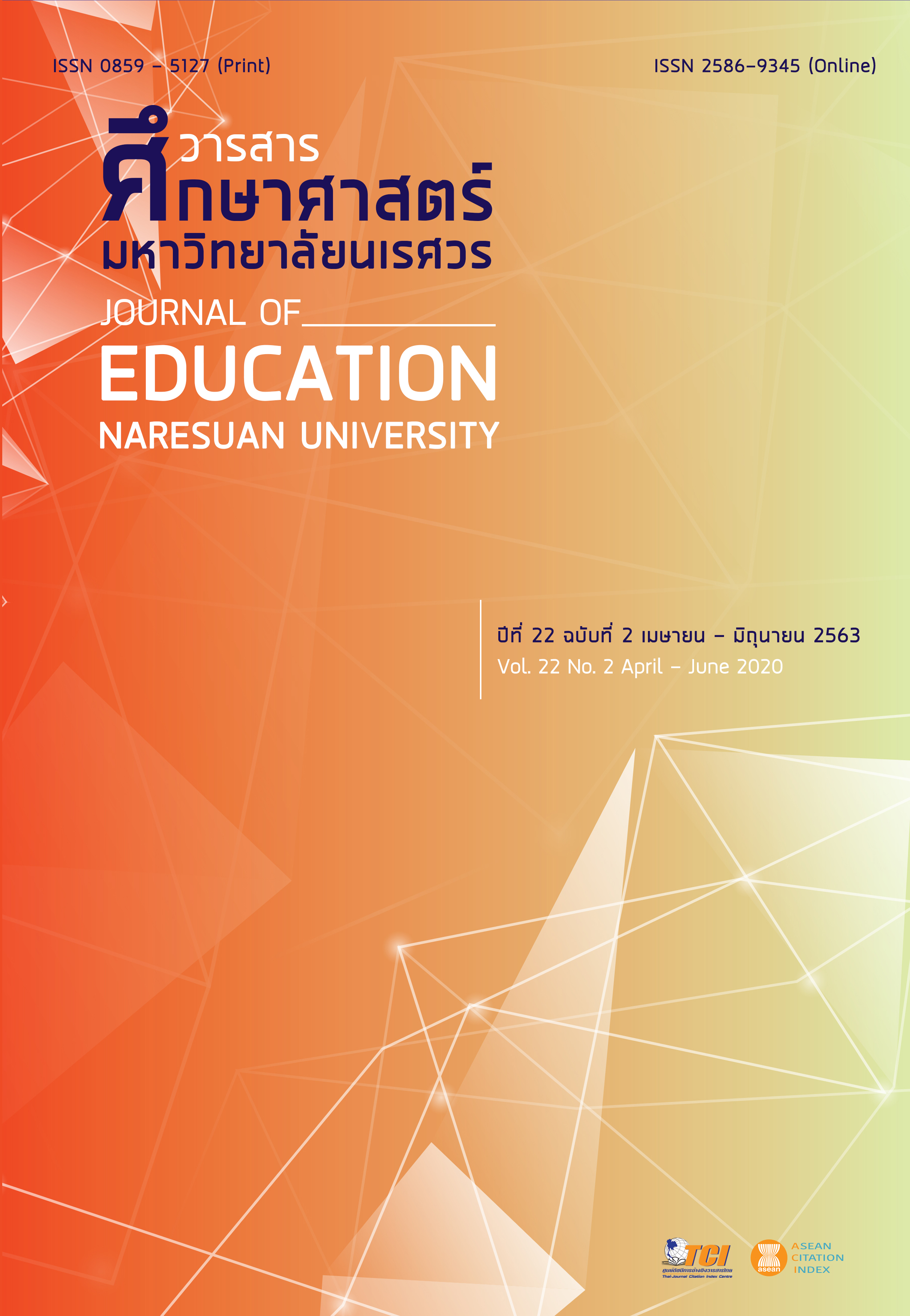DEVELOPMENT OF PROJECT-BASED LEARNING MODEL USING SOCIAL MEDIA TO ENHANCE CREATIVITY FOR JUNIOR HIGH SCHOOL STUDENTS
Main Article Content
Abstract
The purpose of this research was to develop a project-based learning model with social media to enhance creativity for the lower secondary students. The samples were sixteen students studied at the third grade of the school, Auaangoonwittaya School, in the second semester of academic year 2016. The research consisted of two phases: phase 1: creating and monitoring the quality of the Project-based teaching model with social media to enhance creativity for junior high school students Phase 2 trial and studying of the use of developed model. The results showed that:
1. The developed model consisted of five components: 1) the foundation of the model, 2) the goal of the model, 3) the learning process of the model, 4) the use of the model, and 5) the effects on the learner. In teaching and learning, there were six learning steps: 1) prepare; 2) problem select; 3) plan the project; 4) implement the plan; 5) write a report; and 6) evaluate the project.
2. The finding were: 1) The students learn in a project-based learning model with social media to enhance creativity for junior high school students. Overall, There were a significant differences in creativity pretest and posttest scores after learning at the .01 level. 2) The students’ work assignment creativity were in good level and 3) The students satisfied with learning through project-based learning model with social media to enhance creativity for junior high school students, the overall was at high level.
Article Details
The owner of the article does not copy or violate any of its copyright. If any copyright infringement occurs or prosecution, in any case, the Editorial Board is not involved in all the rights to the owner of the article to be performed.
References
Brookhart, M. S. (2013). How to create and use rubrics for formative assessment and grading. Retrieved August 1, 2018, from http://www.ascd.org
Dechakup, P., Yindeesuk, P., & Meesri, R. (2010). Teaching with thinking project: Integrated teaching and learning. Bangkok: Chulalongkorn University Press. [in Thai]
Guilford, J. P. (1967). The nature of human intelligence. New York: McGraw-Hill.
Joyce, B., & Weil, M. (1996). Models of teaching (5th ed.) Boston: Allyn and Bacon.
Kaewkanha, O., Srijamnong, J., & Pravalanchakorn, J. (2017). Action research on creative thinking development of computer subject in Prathomsuksa 5 student At Bannumque School under the Office of Loei Primary Educational Service Area Office 1. Journal of Education Naresuan University, 19(2), 289 - 304. [in Thai]
Khuharuangrong, K. (2010). A comparison of problem solving ability and attitude of Mattayomsuksa one students toward occupation and technology subject using project-based method and 4 MAT (Master thesis). Phranakhon Sri Ayutthaya: Phranakhon Si Ayuthaya Rajabhat University. [in Thai]
Panich, V. (2012). Way of learning for students in the 21st century (3rd ed.). Bangkok: Foundation of Sodsri-Slidwong. [in Thai]
Phanmanee, A. (2010). Creative thinking (6th ed.). Bangkok: Love and Lift Press. [in Thai]
Sinphanon, S. (2008). Innovative teaching and learning to improve the quality of youth (2nd ed.). Bangkok: 9119 Technic Printing. [in Thai]
William N. Bender. (2012). Project-based learning: Differentiating instruction for the 21st century. Thousand Oaks, Calif.: Corwin Press.


